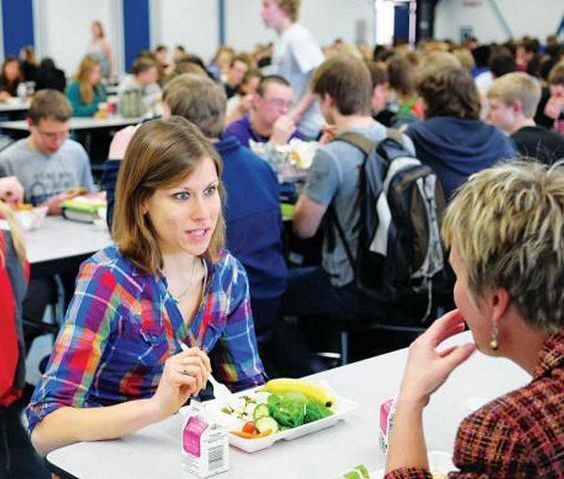Poverty and education linked
A recently released study by the Southern Education Foundation shows an increase in low-income Ohio public school students. The study looked at the number of students eligible for a federally funded free or reduced lunch. In Ohio, the number is at 42.7 percent. Nationally the percentage is higher at 48 percent. The study also showed that the majority of public school students in one third of states came from low-income households.
According to the US Department of Agriculture Food and Nutrition Service, a student in Ohio is eligible for a reduced price lunch if their family of four has an income of $43,568. Lunch is free if the family income is $30,615. The current federal guideline for poverty for a family of four is an income level of $23,550.
The number of students who meet the eligibility requirement for a free or reduced cost lunch in the school districts in Tuscarawas County varies widely. According to the Ohio Department of Education, Garaway High School has the lowest number, with 25 percent of students enrolled in the program. Dover High School has 30 percent, New Philadelphia High School, 35 percent; Tusky Valley High School, 35 percent; Indian Valley High School, 42 percent; Claymont High School, 51 percent; and Newcomerstown High School, 59 percent. There was no information available for Strasburg.
Study after study shows a correlation between academic achievement and economic advantage. Plainly put, financially advantaged kids get better grades than their lower income classmates do. Grades are not always reflective of what a child has learned, said Karie McCrate, principal of Dover High School. At Dover we are fortunate to have such great teachers for students in grades 5-8 to help prepare kids for high school. Even kids from financially challenged homes get help finding a path, even when they have little support at home.
It becomes more apparent: student achievement is a product of factors that occur outside of school, and among the most powerful of those factors is economic status. Kids who experience poverty and all the problems that come with it have enough trouble just surviving day to day, much less doing well in school.
We have a large percentage of students involved with extracurricular activities that encourage them to get excited about learning. For some of our students though, it is hard, face it, how can you learn when you are hungry? Some kids have so many struggles we can only imagine. Parents do a good job of covering up their struggles, too, McCrate said.
McCrate blames lack of parental supervision, added responsibilities like taking care of siblings while parents work, and even having to work themselves for lower grades in financially challenged students. Lower grades dont always mean students are not bright, said McCrate. Grades are an indicator of compliance. Historically, children have been rewarded for doing their homework and memorizing information they will be tested on later. Some kids learn in nontraditional ways and it is hard to show it in a classroom. It is our job, as educators, to help them.

